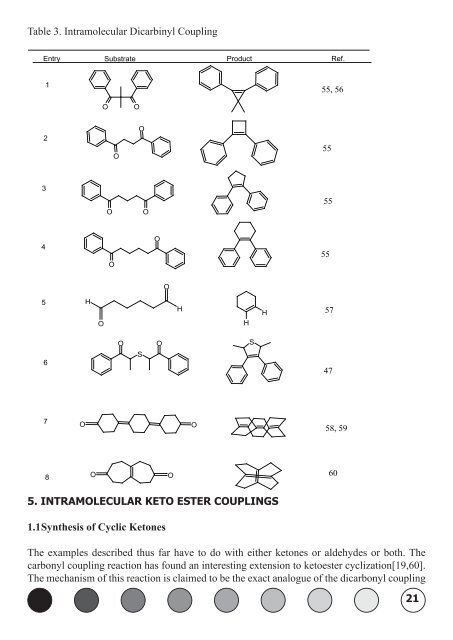Low-Valent Titanium Induced Carbonyl Coupling Reactions
Low-Valent Titanium Induced Carbonyl Coupling Reactions
Low-Valent Titanium Induced Carbonyl Coupling Reactions
You also want an ePaper? Increase the reach of your titles
YUMPU automatically turns print PDFs into web optimized ePapers that Google loves.
Table 3. Intramolecular Dicarbinyl <strong>Coupling</strong><br />
Entry Substrate Product Ref.<br />
1<br />
2<br />
3<br />
4<br />
5<br />
6<br />
7<br />
8<br />
O<br />
H<br />
O<br />
O O<br />
O<br />
O<br />
O O<br />
O<br />
O<br />
S<br />
O<br />
O<br />
O<br />
O O<br />
5. INTRAMOLECULAR KETO ESTER COUPLINGS<br />
1.1 Synthesis of Cyclic Ketones<br />
H<br />
O<br />
H<br />
S<br />
H<br />
55, 56<br />
55<br />
55<br />
55<br />
57<br />
47<br />
58, 59<br />
The examples described thus far have to do with either ketones or aldehydes or both. The<br />
carbonyl coupling reaction has found an interesting extension to ketoester cyclization[19,60].<br />
The mechanism of this reaction is claimed to be the exact analogue of the dicarbonyl coupling<br />
60<br />
21










